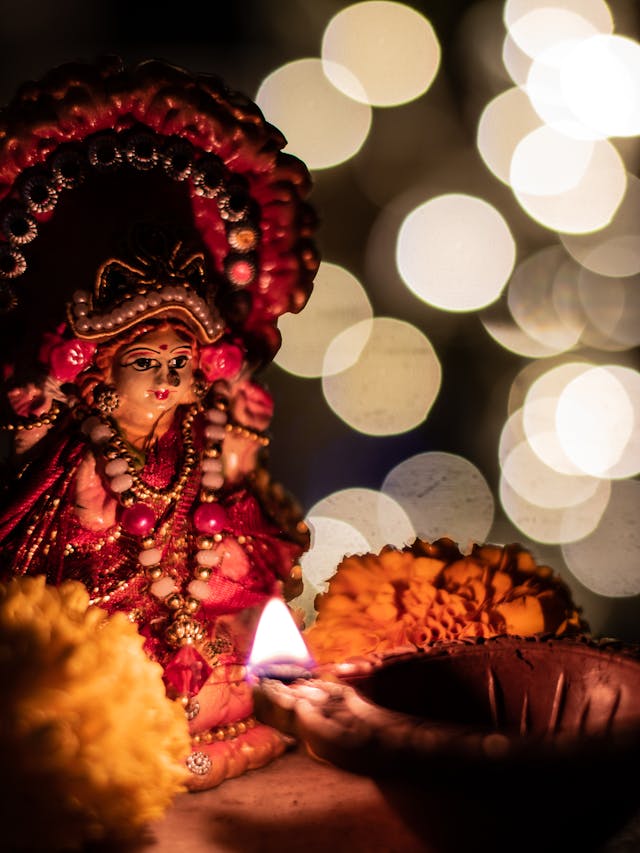


Upasana means methods of worship (Bhakti), usually of meditative kind. Werner translates it as “meditation”, while Murty translates it as “steadfastness of mind in the thing meditated upon”. Upasana is also sometimes referred to as Puja. However, a formal Puja is just one type of worship in Indian philosophy. Paul Deussen translates upasana as “meditation” and “worship”, depending on the context.
The concept of Upasana developed a large tradition in Vedanta era. Edward Crangle, in his review, states that Upasana in Vedic text initially developed as a form of “substitute sacrifice”, where symbolic meditation of the Aranyakas practice, instead of actual sacrifice ritual, offered a means to gain the same merit without the sacrifice. Over time, this idea shifted from meditating about the ritual, to internalization and meditation of the ideas and concepts associated. This may have marked a key evolution in Vedic era, one from ritual sacrifices to one contemplating spiritual ideas.
It flowered into the meaning of an intense kind of systematic meditation and identification.
Upasana means methods of worship (Bhakti), usually of meditative kind. Werner translates it as “meditation”, while Murty translates it as “steadfastness of mind in the thing meditated upon”. Upasana is also sometimes referred to as Puja. However, a formal Puja is just one type of worship in Indian philosophy. Paul Deussen translates upasana as “meditation” and “worship”, depending on the context.
The concept of Upasana developed a large tradition in Vedanta era. Edward Crangle, in his review, states that Upasana in Vedic text initially developed as a form of “substitute sacrifice”, where symbolic meditation of the Aranyakas practice, instead of actual sacrifice ritual, offered a means to gain the same merit without the sacrifice. Over time, this idea shifted from meditating about the ritual, to internalization and meditation of the ideas and concepts associated. This may have marked a key evolution in Vedic era, one from ritual sacrifices to one contemplating spiritual ideas.
It flowered into the meaning of an intense kind of systematic meditation and identification.
Adi Shankara described Upasana as a kind of dhyana — meditation “about someone or something, consisting of continuous succession of comparable basic concepts, without interspersing it with dissimilar concepts, that proceeds according to the scriptures and on idea enjoined in the scriptures.”[15] It is a state of concentration where “whatever is meditated upon” is completely identified, absorbed with self, and unified with as one identifies self consciousness with one’s body. The two become one, “you are that”. The “someone or something” in Upasana can be a symbolic deity or an abstract concept, states Shankara. Upasana entails more than mere concentration or sitting in dhyana; it is being one with god, which manifests as “be a god”, and by “being a god, he attains the god,” living this identity with god in daily life.
